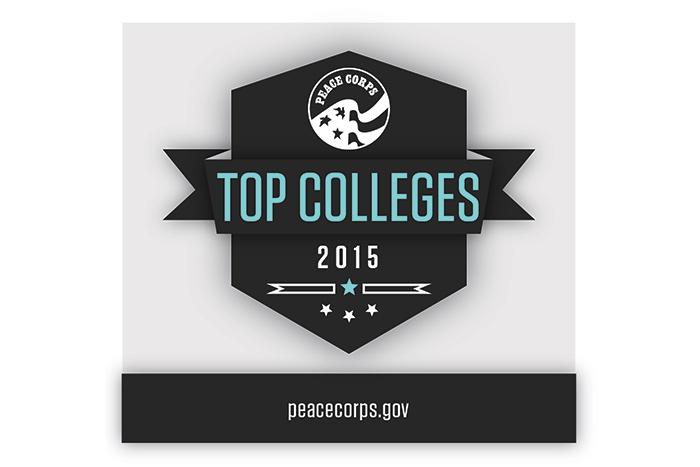Peace Corps Top College

Dickinson is again on the Peace Corps’ list of top volunteer-producing colleges and universities
Dickinson is listed at No. 6 among small schools in the Peace Corps’ 2015 rankings of the top volunteer-producing colleges and universities across the country. Currently, 13 alumni are volunteering worldwide. In 2014, Dickinson held the No. 8 position and has ranked in the top 10 among small colleges for the past three years. Dickinson is one of only three Pennsylvania schools to earn a top-volunteer-producer designation.
Dickinson alumni are currently serving in Benin, Burkina Faso, Ghana, Macedonia, Madagascar, Moldova, Panama, Paraguay, Peru, Rwanda and Tanzania. They work in sectors including agriculture, education, environment and health.
Alumni from more than 3,000 colleges and universities nationwide have served in the Peace Corps since the agency’s founding in 1961, including 234 Dickinson alumni. One of them is Alexandra Kaye ’13, who graduated with a double major in anthropology and Latin American, Latino, & Caribbean Studies and is currently a water-sanitation volunteer in Peru.
“My water and sanitation projects are vitally important to the health and welfare of the community, and I know that the work I am doing is having a measurable impact on quality of life,” said Kaye. “On a personal level, just being present in my community by playing with little kids, buying snacks and laundry detergent from the local stores, or sitting and talking to women about their day, is a making a difference.”
This year’s rankings follow historic reforms to Peace Corps’ application and selection process that resulted in a 22-year application high for the agency in 2014. Applicants will now find a simplified, more personal application process.
“The Peace Corps provides an indispensable opportunity for young people out of college to put their unique skills to work making a difference for communities around the world,” Peace Corps Director Carrie Hessler-Radelet said. “Volunteers make lasting change by living and working at the grassroots level in their communities of service and using their talents to tackle some of the most critical challenges in international development.”
Learn More
Published February 18, 2015